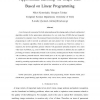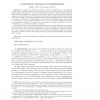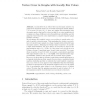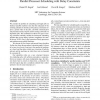47 search results - page 7 / 10 » The order of the largest complete minor in a random graph |
PAMI
2007
13 years 7 months ago
2007
A new framework is presented for both understanding and developing graph-cut based combinatorial algorithms suitable for the approximate optimization of a very wide class of MRFs ...
ESA
1995
Springer
13 years 11 months ago
1995
Springer
An input to the betweenness problem contains m constraints over n real variables (points). Each constraint consists of three points, where one of the points is specified to lie in...
ICALP
2011
Springer
12 years 11 months ago
2011
Springer
In [13], Erd˝os et al. defined the local chromatic number of a graph as the minimum number of colors that must appear within distance 1 of a vertex. For any ∆ ≥ 2, there are ...
CORR
2008
Springer
13 years 7 months ago
2008
Springer
Linearity tests are randomized algorithms which have oracle access to the truth table of some function f, and are supposed to distinguish between linear functions and functions whi...
SODA
2001
ACM
13 years 9 months ago
2001
ACM
We consider the problem of scheduling unit-length jobs on identical parallel machines such that the makespan of the resulting schedule is minimized. Precedence constraints impose ...




